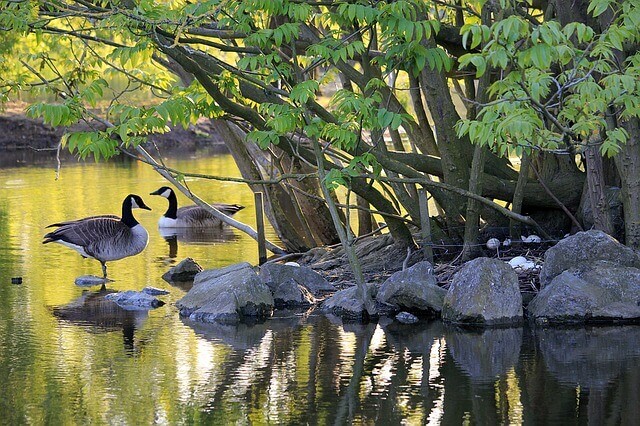 India is a signatory to several major international conventions relating to the conservation and management of wildlife. Some of these are the Convention on Biological Diversity, the Convention on International Trade in Endangered Species of Wild Fauna and Flora (CITES), the Convention on the Conservation of Migratory Species of Wild Animals, etc.
India is a signatory to several major international conventions relating to the conservation and management of wildlife. Some of these are the Convention on Biological Diversity, the Convention on International Trade in Endangered Species of Wild Fauna and Flora (CITES), the Convention on the Conservation of Migratory Species of Wild Animals, etc.
Financial and Technical assistance is provided to State/Union Territory Governments for the protection and Management of Protected Areas as well as other forests under various Centrally Sponsored Schemes.
Biodiversity of India and the need for protection

India is one of the 17 mega-diverse countries of the world. However many plants and animals are facing the threat of extinction. To protect the critically endangered and other threatened animal and plant species, the Government of India has adopted many steps, laws, and policy initiatives.
Steps Taken By Government for Biodiversity Protection
Indian Government has taken various biodiversity protection steps. Important measures include:
- The Central Government enacted the Wild Life (Protection) Act, in 1972. The Act, inter alia, provides for the creation of Protected Areas for the protection of wildlife and also provides for punishment for hunting of specified fauna specified in schedules I to IV thereof.
- Wetland (Conservation and Management) Rules 2010 have been framed for the protection of wetlands, in the States.
- The Centrally Sponsored Scheme of the National Plan for Conservation of Aquatic Eco-System also provides assistance to the States for the management of wetlands including Ramsar sites in the country.
- The Wildlife Crime Control Bureau has been established for control of illegal trade in wildlife, including endangered species.
- Wildlife Institute of India, the Bombay Natural History Society, and the Salim Ali Centre for Ornithology and Natural History are some of the research organizations undertaking research on the conservation of wildlife.
- The Indian Government has banned the veterinary use of diclofenac drug which has caused the rapid population decline of Gyps vultures across the Indian Subcontinent. Conservation Breeding Programmes to conserve these vulture species have been initiated at Pinjore (Haryana), Buxa (West Bengal), and Rani, Guwahati (Assam) by the Bombay Natural History Society.
- The Centrally Sponsored Scheme ‘Integrated Development of Wildlife Habitats‘ has been modified by including a new component namely ‘Recovery of Endangered Species‘ and 16 species have been identified for recovery viz. Snow Leopard, Bustard (including Floricans), Dolphin, Hangul, Nilgiri Tahr, Marine Turtles, Dugong, Edible Nest Swiftlet, Asian Wild Buffalo, Nicobar Megapode, Manipur Brow-antlered Deer, Vultures, Malabar Civet, Indian Rhinoceros, Asiatic Lion, Swamp Deer and Jerdon’s Courser.
- Under the ‘Recovery of Endangered Species’ component of the Centrally Sponsored Scheme ‘Integrated Development of Wildlife Habitats’ for the recovery of endangered species viz. Hangul in Jammu and Kashmir, Snow Leopard in Jammu and Kashmir, Himachal Pradesh, Uttarakhand and Arunachal Pradesh, Vulture in Punjab, Haryana and Gujarat, Swiftlet in Andaman and Nicobar Islands, Nilgiri Tahr in Tamil Nadu, Sangai Deer in Manipur, the government has to spend lakhs of rupees.
- Protected Areas, viz, National Parks, Sanctuaries, Conservation Reserves, and Community Reserves all over the country covering important habitats have been created as per the provisions of the Wild Life (Protection) Act, 1972 to provide better protection to wildlife, including threatened species and their habitat.
- Financial and technical assistance is extended to the State Governments under various Centrally Sponsored Schemes, viz, ‘Integrated Development of Wildlife Habitats’, ‘Project Tiger’, and ‘Project Elephant’ for providing better protection and conservation to wildlife.
- The Central Bureau of Investigation (CBI) has been empowered under the Wild Life (Protection) Act, of 1972 to apprehend and prosecute wildlife offenders.
- The State Governments have been requested to strengthen the field formations and intensify patrolling in and around the Protected Areas.
Important Indian Acts passed related to Environment and Bio-Diversity

- Fisheries Act 1897.
- Indian Forests Act 1927.
- Mining and Mineral Development Regulation Act 1957.
- Prevention of cruelty to animals 1960.
- Wildlife Protection Act 1972.
- Water (prevention and control of pollution) Act 1974.
- Forest Conservation Act 1980.
- Air(prevention and control of pollution) act 1981.
- Environment Protection Act 1986.
- Biological Diversity Act 2002.
- Scheduled Tribes and other traditional forest dwellers (recognition of rights) act 2006.
Policies Related to Environment and Bio-Diversity
- National Forest Policy.
- National Conservation Strategy and Policy Statement on Environment and Development.
- National Policy and Macro-level Action Strategy on Biodiversity.
- National Biodiversity Action Plan (2009).
- National Agriculture Policy.
- National Water Policy.
- National Environment Policy (2006).
Also read: Vulture Conservation in India








I have 52 plants .ages 7 to 8 years. Iwant help govt. Because my plant future control pollution help.plz my help.
I m 16 and every year on by birth day I plant a tree ….
Today I have a beautiful garden 😀
You are a good citizen of country. I love those who care for our environment. Thank you for your hard work in this.
Me and my grandfather has purchased many of plants and have no property to place them and curing them so we have gifted to our neighbours and realtive , in future when i will start earnig ,i will purchase bird everymonth and will give them freedom.
THANK YOU ALL TO READ THIS